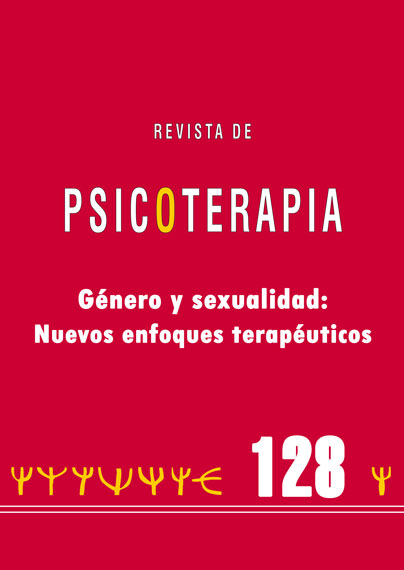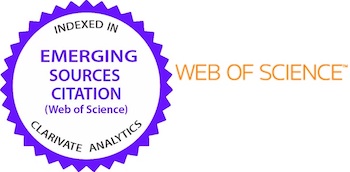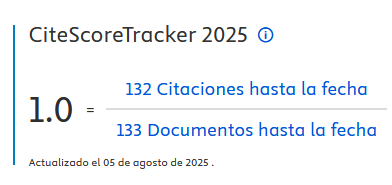El impacto de una breve intervención de atención plena en línea para apoyar la disfunción eréctil en hombres afrocaribeños: un ensayo piloto controlado, aleatorio, controlado en lista de espera y análisis de contenido
DOI:
https://doi.org/10.5944/rdp.v35i128.40382Palabras clave:
disfunción eréctil, caribe africano, atención cognitiva, autoeficacia sexual, bienestarResumen
Ensayos clínicos limitados han evaluado la eficacia de la atención plena para el funcionamiento sexual en hombres y los estudios existentes se han dirigido a poblaciones masculinas blancas. El presente estudio tuvo como objetivo evaluar la eficacia de una intervención cognitiva basada en la atención plena (MBCI) para la disfunción eréctil (DE) en n = 68 hombres afrocaribeños de entre 31 y 50 años.
Se adoptó un enfoque de métodos mixtos para establecer la viabilidad de una MBCI breve en línea, utilizando un ensayo aleatorio controlado en lista de espera con un grupo activo y retrasado y un análisis de contenido. Los participantes completaron una serie de evaluaciones que midieron la disfunción eréctil, la autoeficacia sexual, el bienestar y la atención cognitiva en las semanas 0, 4 y 12 (seguimiento). También completaron una serie de preguntas de retroalimentación sobre sus experiencias de la intervención en las semanas 0, 4 y 12. Se informaron niveles más altos de funcionamiento eréctil, atención cognitiva, autoeficacia sexual y bienestar después de la intervención y en las 12. -seguimiento semanal. Un análisis de contenido de las respuestas de los participantes arrojó resultados favorables, y los participantes sugirieron que continuaran realizando ejercicios de atención cognitiva para ayudarlos a "tener un mejor sexo". Esta investigación es la primera que analiza la MCBI en hombres afrocaribeños con disfunción eréctil y demuestra la eficacia de esta intervención en línea; sin embargo, justifica su replicación con un grupo más grande de participantes con disfunción eréctil étnica y culturalmente diversos.
Descargas
Citas
American Psychiatric Association. (2013). Diagnostic and Statistical
Manual of Mental Disorders (5th ed.). https://doi.org/10.1176/appi.
books.9780890425596
National Health Service. (2023). Erectile Dysfunction (Impotence). https://www.nhs.uk/conditions/erection-problems-erectile-dysfunction/British Association of Counsellors and Psychotherapists. (2018). https://www.bacp.co.uk/bacp-journals/therapy-today/2018/october-2018/whywe-need-to-talk-about-race/
Banbury, S., Lusher, J., Snuggs, S., & Chandler, C. (2021). Mindfulnessbased
therapies for men and women with sexual dysfunction: a
systematic review and meta-analysis. Sexual and Relationship Therapy,
(4), 533–555. https://doi.org/10.1080/14681994.2021.1883578
Banbury, S., Chandler, C., & Lusher, J. (2023). A systematic review
exploring the effectiveness of mindfulness for sexual functioning in
women with cancer. Psych, 5(1), 194–208. https://doi.org/10.3390/
psych5010015
Bandura, A. (1997). Self-efficacy: The exercise of control. W H Freeman/
Times Books/ Henry Holt & Co.
Bossio, J. A., Basson, R., Driscoll, M., Correia, S., & Brotto, L. A. (2018).
Mindfulness-based group therapy for men with situational erectile
dysfunction: a mixed-methods feasibility analysis and pilot study.
The Journal of Sexual Medicine, 15(10), 1478–1490. https://doi.
org/10.1016/j.jsxm.2018.08.013
British Psychological Society. (2017). Ethics guidelines for internetmediated
research. https://www.bps.org.uk/news-and-policy/ethicsguidelines-
internet-mediated-research
Carvalho, J., & Nobre, P. (2010). Predictors of men’s sexual desire: The
role of psychological, cognitive-emotional, relational, and medical
factors. Journal of Sex Research, 48(2-3), 254-262. https://doi.
org/10.1080/00224491003605475
Carvalho, J., & Nobre, P. (2011). Biopsychosocial determinants of
men’s sexual desire: testing an integrative model. The Journal of
Sexual Medicine, 8(3), 754–763. https://doi.org/10.1111/j.1743-
02156.x
Chou, N. H, Huang, Y. J, & Jiann B.P., (2015). The impact of illicit use of
amphetamine on male sexual functions. Journal of Sexual Medicine,
(8),1694-1702. https://doi.org/10.1111/jsm.12926
Data Protection Act of 2018. C. 12. Part 1. Section 1. U.K. Public General
Act (2018). http://www.legislation.gov.uk/ukpga/2018/12/section/1
Del Río, F. J, Cabello, F., & Fernández I (2015). Influence of substance
use on the erectile response in a sample of drug users. International
Journal of Clinical and Health Psychology, 15(1), 37-43. https://doi.
org/10.1016/j.ijchp.2014.10.002
Dewitte, M., Bettocchi, C., Carvalho, J., Corona, G., Flink, I., Limoncin, E.,
Pascoal, P. M., Reisman, Y., & Van Lankveld, J. (2021). A psychosocial approach to erectile dysfunction: position statements from the European
Society of Sexual Medicine (ESSM). Sexual Medicine, 9(6), 100434.
https://doi.org/10.1016/j.esxm.2021.100434
Dunkley, C. R., Goldsmith, K. M., & Gorzalka, B. B. (2015). The potential
role of mindfulness in protecting against sexual insecurities. Canadian
Journal of Human Sexuality, 24(2), 92–103. https://doi.org/10.3138/
cjhs.242-a7
Feldman, G., Hayes, A. M., Kumar, S., Greeson, J. M., & Laurenceau, J.
(2006). Mindfulness and Emotion Regulation: The development and
initial validation of the Cognitive and Affective Mindfulness Scale-
Revised (CAMS-R). Journal of Psychopathology and Behavioral
Assessment, 29(3), 177–190. https://doi.org/10.1007/s10862-006-
-8
Frühauf, S., Gerger, H., Schmidt, H. M., & Münder, T. (2013). Efficacy
of Psychological Interventions for Sexual Dysfunction: A Systematic
Review and Meta-Analysis. Archives of Sexual Behavior, 42(6), 915–
https://doi.org/10.1007/s10508-012-0062-0
Hartmann, U., Schedlowski, M., & Krüger, T. (2005). Cognitive and partnerrelated
factors in rapid ejaculation: Differences between dysfunctional
and functional men. World Journal of Urology, 23(2), 93–101. https://
doi.org/10.1007/s00345-004-0490-0
Hucker, A., & McCabe, M. P. (2014). Incorporating mindfulness and chat
groups into an online cognitive behavioral therapy for mixed female
sexual problems. Journal of Sex Research, 52(6), 627–639. https://doi.
org/10.1080/00224499.2014.888388
Jedamzik, S. (2019). Digitale Gesundheit und Pflege. Unfallchirurg, 122(9),
–675. https://doi.org/10.1007/s00113-019-0672-2
Knutson, B., & Greer, S. (2008). Anticipatory affect: neural correlates
and consequences for choice. Philosophical Transactions of the
Royal Society B, 363(1511), 3771–3786. https://doi.org/10.1098/
rstb.2008.0155
Kroenke, K., Spitzer, R. L., & Williams, J. B. W. (2001). The PHQ-9.
Journal of General Internal Medicine, 16(9), 606–613. https://doi.
org/10.1046/j.1525-1497.2001.016009606.x
Lakens, D. (2013). Calculating and reporting effect sizes to facilitate
cumulative science: a practical primer for t-tests and ANOVAs.
Frontiers in Psychology, 4. https://doi.org/10.3389/fpsyg.2013.00863
Laumann, E. O., West, S. L., Glasser, D. B., Carson, C. C., Rosen, R. C.,
& Kang, J. H. (2007). Prevalence and correlates of erectile dysfunction
by race and ethnicity among men aged 40 or older in the United States:
From the Male Attitudes Regarding Sexual Health Survey. The Journal
of Sexual Medicine, 4(1), 57–65. https://doi.org/10.1111/j.1743-
00340.x
Libman, E., Rothenberg, I., Fichten, C. S., & Amsel, R. (1985). The
SSES-E: a measure of sexual self-efficacy in erectile functioning.
Journal of Sex & Marital Therapy, 11(4), 233–247. https://doi.
org/10.1080/00926238508405450
Mental Capacity Act of 2005, C9. UK Public General Acts. (2005). https://
www.legislation.gov.uk/ukpga/2005/9/contents.
Meyer, O. L., & Zane, N. (2013). The influence of race and ethnicity in
clients’ experiences of mental health treatment. Journal of Community
Psychology, 41(7), 884–901. https://doi.org/10.1002/jcop.21580
Michie, S. (2014). Implementation science: understanding behaviour
change and maintenance. BMC Health Servicies Reseach, 14(Suppl 2),
O9. https://doi.org/10.1186/1472-6963-14-S2-O9
Michie, S., Richardson, M., Johnston, M., Abraham, C., Francis, J. J.,
Hardeman, W., Eccles, M., Cane, J. E., & Wood, C. (2013). The Behavior
Change Technique Taxonomy (v1) of 93 Hierarchically Clustered
Techniques: Building an International Consensus for the Reporting of
Behavior Change Interventions. Annals of Behavioral Medicine, 46(1),
–95. https://doi.org/10.1007/s12160-013-9486-6
Peugh, J., & Belenko, S. (2001). Alcohol, drugs and sexual gunction: a
review. Journal of Psychoactive Drugs, 33(3), 223–232. https://doi.or
g/10.1080/02791072.2001.10400569
Porst, H., Montorsi, F., Rosen, R. C., Gaynor, L., Grupe, S., & Alexander,
J. R. (2007). The Premature Ejaculation Prevalence and Attitudes
(PEPA) Survey: Prevalence, comorbidities, and Professional Help-
Seeking. European Urology, 51(3), 816–824. https://doi.org/10.1016/j.
eururo.2006.07.004
Rhoden, E. L., Telöken, C., Sogari, P. R., & Souto, C. a. V. (2002). The
use of the simplified International Index of Erectile Function (IIEF-
as a diagnostic tool to study the prevalence of erectile dysfunction.
International Journal of Impotence Research, 14(4), 245–250. https://
doi.org/10.1038/sj.ijir.3900859
Seidler, Z. E., Dawes, A. J., Rice, S., Oliffe, J. L., & Dhillon, H. M.
(2016). The role of masculinity in men’s help-seeking for depression:
A systematic review. Clinical Psychology Review, 49, 106–118. https://
doi.org/10.1016/j.cpr.2016.09.002
Şerefoğlu, E. C., McMahon, C. G., Waldinger, M. D., Althof, S. E., Shindel, A.,
Adaikan, G., Becher, E., Dean, J., Giuliano, F., Hellstrom, W. J., Giraldi, A.,
Glina, S., Incrocci, L., Jannini, E. A., McCabe, M. P., Parish, S. J., Rowland,
D. L., Segraves, R., Sharlip, I. D., & Torres, L. O. (2014). An evidence‐based
unified definition of lifelong and acquired premature ejaculation: Report of
the Second International Society for Sexual Medicine ad hoc Committee for
the Definition of Premature Ejaculation. The Journal of Sexual Medicine,
(6), 1423–1441. https://doi.org/10.1111/jsm.12524
Stephenson, K. R., & Kerth, J. (2017). Effects of mindfulness-based
therapies for female sexual dysfunction: a meta-analytic review. Journal
of Sex Research, 54(7), 832–849. https://doi.org/10.1080/00224499.20
Steinke, E. E., Wright, D. W., Chung, M. L., & Moser, D. K. (2008). Sexual
self-concept, anxiety, and self-efficacy predict sexual activity in heart
failure and healthy elders. Heart & Lung, 37(5), 323–333. https://doi.
org/10.1016/j.hrtlng.2007.09.004
Tennant, R., Hiller, L., Fishwick, R., Platt, S., Joseph, S., Weich, S.,
Parkinson, J., Secker, J., & Stewart‐Brown, S. (2007). The Warwick-
Edinburgh Mental Well-being Scale (WEMWBS): development and
UK validation. Health and Quality of Life Outcomes, 5(1). https://doi.
org/10.1186/1477-7525-5-63
Van Diest, S. L., Van Lankveld, J., Leusink, P., Slob, A. K., & Gijs, L. (2007).
Sex therapy through the internet for men with sexual dysfunctions: a
pilot study. Journal of Sex & Marital Therapy, 33(2), 115-133. https://
doi.org/10.1080/00926230601098456
Van Lankveld, J. (2016). Internet-based interventions for women’s sexual
dysfunction. Current Sexual Health Reports, 8(3), 136–143. https://doi.
org/10.1007/s11930-016-0087-9
Yafi, F. A., Jenkins, L. C., Albersen, M., Corona, G., Isidori, A. M., Goldfarb,
S., Maggi, M, Nelson, C. J., Parish, S. J., Salonia, A., Tan, R., Mulhall,
J. P., & Hellstrom, W. J. (2016). Erectile dysfunction. Nature Reviews
Disease Primers, 2(1), 16003. https://doi.org/10.1038/nrdp.2016.3
Zlomuzica, A., Preusser, F., Schneider, S., & Margraf, J. (2015). Increased
perceived self-efficacy facilitates the extinction of fear in healthy
participants. Frontiers in Behavioral Neuroscience, 9, 270. https://doi.
org/10.3389/fnbeh.2015.00270
Descargas
Publicado
Cómo citar
Número
Sección
Licencia
Derechos de autor 2024 Revista de Psicoterapia

Esta obra está bajo una licencia internacional Creative Commons Atribución-NoComercial 4.0.
Los autores/as que publiquen en esta revista aceptan las siguientes condiciones:
- Los autores/as conservan los derechos de autor y ceden a la revista el derecho de la primera publicación, con el trabajo registrado con la Creative Commons CC-BY-NC 4.0 Internacional, que permite a terceros citar el texto y usarlo sin alterarlo y sin beneficio económico, siempre que mencionen la autoría del trabajo y la primera publicación en esta revista.
- Los autores/as pueden realizar otros acuerdos contractuales independientes y adicionales para la distribución no exclusiva de la versión del artículo publicado en esta revista (p. ej., incluirlo en un repositorio institucional o publicarlo en un libro), siempre que indiquen claramente que el trabajo se publicó por primera vez en esta revista.
- Las opiniones expresadas en los trabajos son responsabilidad única de los/as autores/as, no reflejando en ningún caso las opiniones o políticas científicas de la revista.














